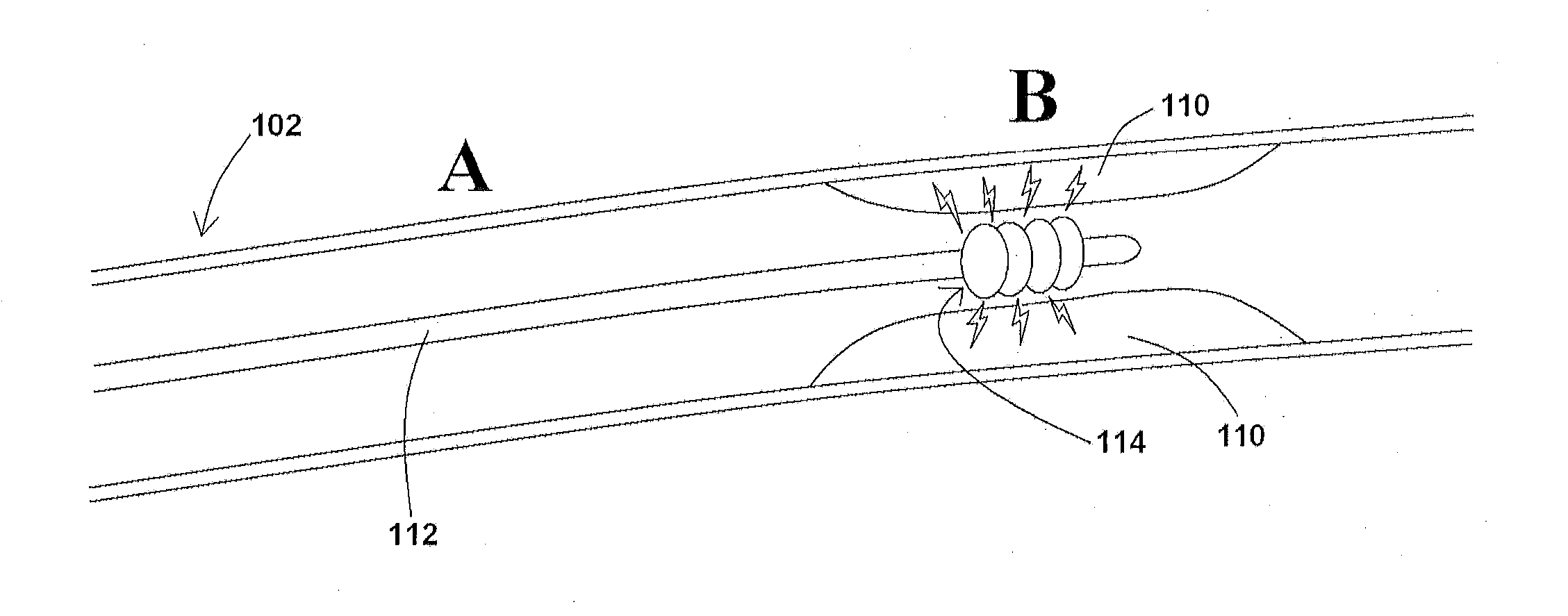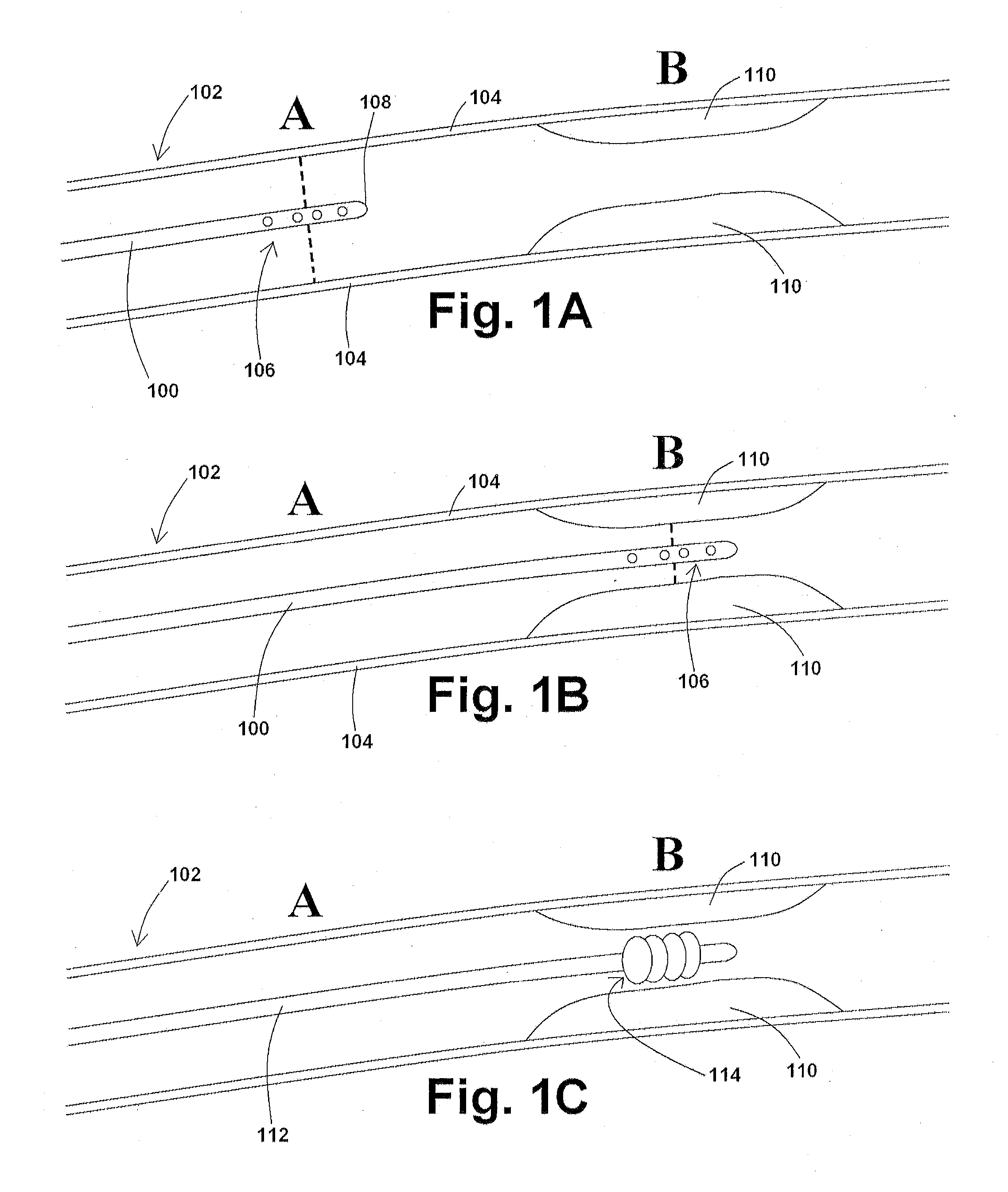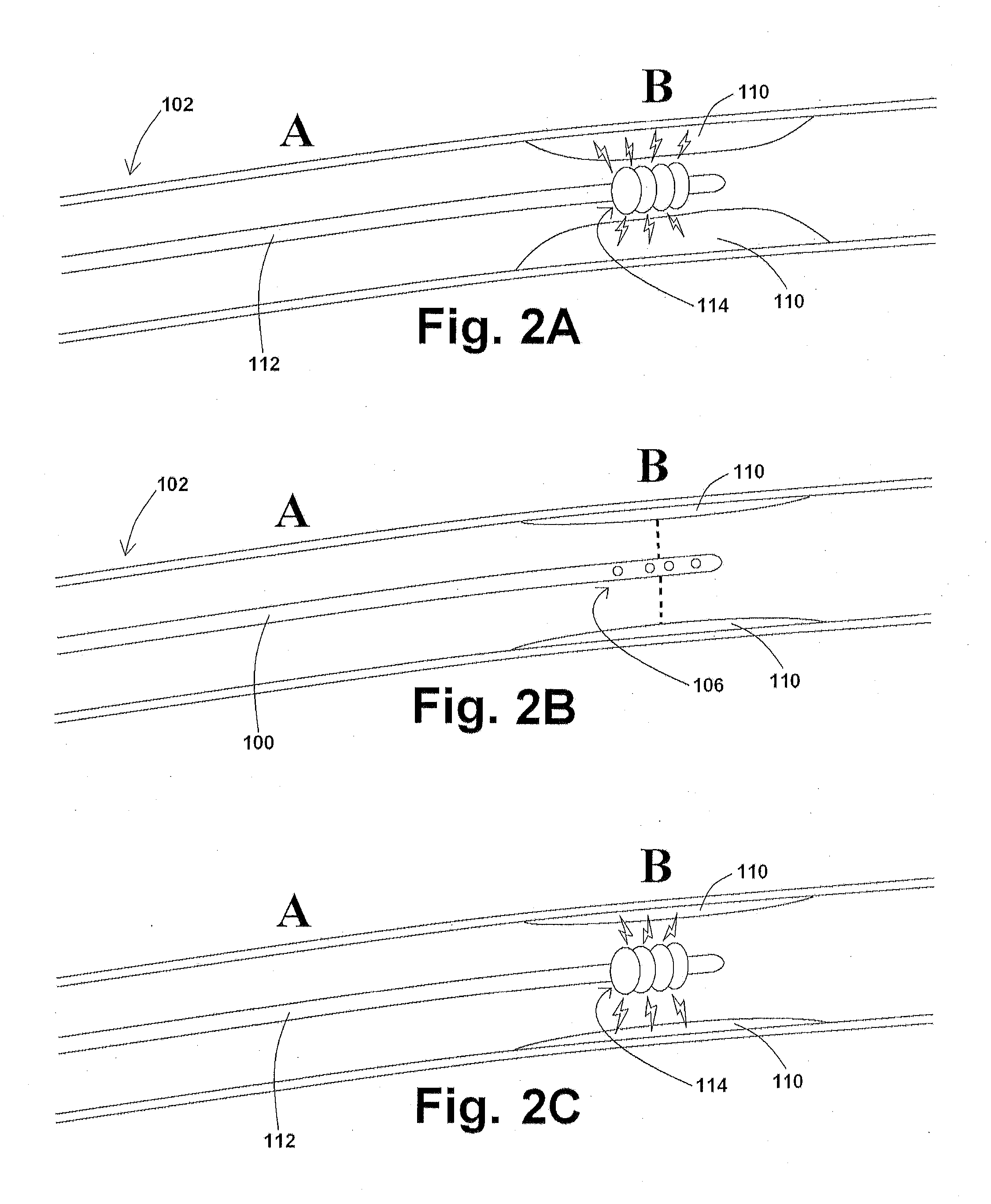Devices, systems, and methods for removing targeted lesions from vessels
a technology of targeted lesions and devices, applied in the field of devices, systems and methods for removing stenotic lesions from vessels, can solve the problems of inability to predict the progression rate of an individual patient, heart attack, and difficult to distinguish patients with low cardiac output, so as to facilitate operation control and facilitate one or more fluid injections.
- Summary
- Abstract
- Description
- Claims
- Application Information
AI Technical Summary
Benefits of technology
Problems solved by technology
Method used
Image
Examples
Embodiment Construction
[0064]Reference will now be made to the embodiments illustrated in the drawings and specific language will be used to describe the same. It will nevertheless be understood that no limitation of scope is intended by the description of these embodiments.
[0065]In at least one embodiment of a method for removing a stenotic lesion of a vessel, the method comprises the steps of measuring at least two luminal parameters, determining a preferred luminal size parameter, and operating a treatment device to increase at least one of the luminal parameters.
[0066]In at least one exemplary method for removing a stenotic lesion of a vessel, the method comprises the steps of measuring a first luminal size parameter at a first location within a vessel lumen, measuring a second luminal size parameter at a second location within the vessel lumen, determining a preferred second luminal size parameter based upon the first luminal size parameter and the second luminal size parameter, and positioning a tre...
PUM
 Login to View More
Login to View More Abstract
Description
Claims
Application Information
 Login to View More
Login to View More - R&D
- Intellectual Property
- Life Sciences
- Materials
- Tech Scout
- Unparalleled Data Quality
- Higher Quality Content
- 60% Fewer Hallucinations
Browse by: Latest US Patents, China's latest patents, Technical Efficacy Thesaurus, Application Domain, Technology Topic, Popular Technical Reports.
© 2025 PatSnap. All rights reserved.Legal|Privacy policy|Modern Slavery Act Transparency Statement|Sitemap|About US| Contact US: help@patsnap.com



